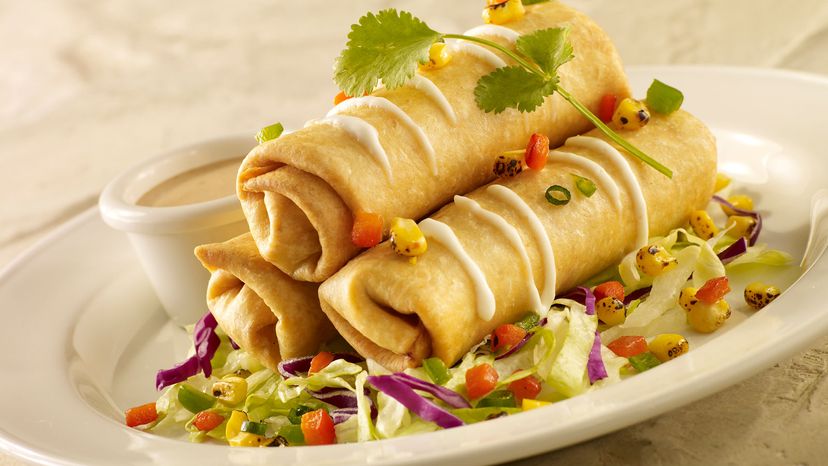
Image: John E. Kelly/Getty Images
About This Quiz
Some of your favorite "international" foods might not have roots outside of America. Instead, they may have been created in the good old U.S.A. Think you know which dishes were first cooked where?
How was the chimichanga created?
A burrito was accidentally dropped into a vat of hot fat at a Mexican restaurant in Arizona.
Basically a fried burrito, the chimichanga was allegedly created by Monica Flinn, the owner of El Charro Café in Tucson, Arizona in 1922 . Or so says one story of its origins.
It was created to be yet another deep-fried option at the Texas State Fair.
It was devised from an old family recipe by a Mexican-American woman in California.
Chop suey has roots in both China and America. What are its ingredients?
minced animal organs
stir-fried meats, plus vegetables
This popular dish might have come from a Cantonese dish known as tsap seui, which is made with minced animal organ bits. The American chop suey stir-fries various meats and vegetables. It was originally a budget meal for rail workers and miners in California.
tofu and veggies
The English muffin is an offshoot of which British baked good?
scone
tea cake
crumpet
An English immigrant in the U.S. re-worked the crumpet by cutting it in half and toasting it. The guy was Samuel Bath Thomas, founder of a little company called Thomas' English Muffins. He gave the treat that name so it would not be confused with the cake-like snack Americans call a "muffin."
Advertisement
Fajitas were originally cooked by Mexican ranch workers on cattle drives. What does the Spanish word "faja" mean?
sizzle
strip
Faja means "strip," or "sash," which is pertinent because traditional fajitas are made with strips of steak (although now lots of other proteins are in the mix).
steak
Your average Italian restaurant in America will serve garlic bread. How would it differ from the typical "garlic bread" you get at a restaurant in Italy?
In Italy, the bread is not toasted.
Americans use French bread and lots butter.
The garlic bread served in the U.S. is a far cry from the stuff served in Italy. In Italy, it's known as bruschetta and is a grilled piece of bread with garlic and olive oil and often tomatoes.
The Italian version doesn't use garlic.
Which popular "international" dressing was allegedly invented in Chicago in 1890?
French dressing
This bright orange dressing was first bottled by Louis Milani Foods in the 1930s as the Milani 1890 French Dressing. (It was given that date to make it seem older and more authentic.) Milani Foods was later brought out by Kraft. Bonus fact: Italian and Russian dressing were also invented in the U.S.
Italian dressing
Russian dressing
Advertisement
If you order a pepperoni pizza in Italy, what is it likely to come out topped with?
bell peppers
Pepperoni pizza with its sliced salami was invented in the U.S. The word "peperone" in Italian refers to actual peppers.
sliced salami
spicy sausage crumbles
Surprisingly, the Chinese didn't invent the fortune cookie. So who did?
Japanese
Fortune cookies actually began in Kyoto, Japan, and the treat was then brought to the U.S. However, when Japanese-Americans were interned in camps during World War II, Chinese bakers took over and "perfected" the recipe as we know it today.
Koreans
Indians
How did German chocolate cake get its name?
It was created by a German immigrant.
It was named after a man with the surname German.
The delightful cake was created by a man named Samuel German, who was born in England. At the time, he worked for a company in Massachusetts creating recipes. Originally, it was known as "German's Chocolate Cake."
It tastes like other German desserts.
Advertisement
Why are spicy tuna rolls not served in Japan?
It's just not very popular.
The Japanese don't eat tuna.
Spicy foods are rare there.
The recipe was likely invented in Los Angeles in the 1980s because Americans would request spicier versions of the classic. In Japanese culture, spicy foods are not common at all.
You Got:
/10
John E. Kelly/Getty Images